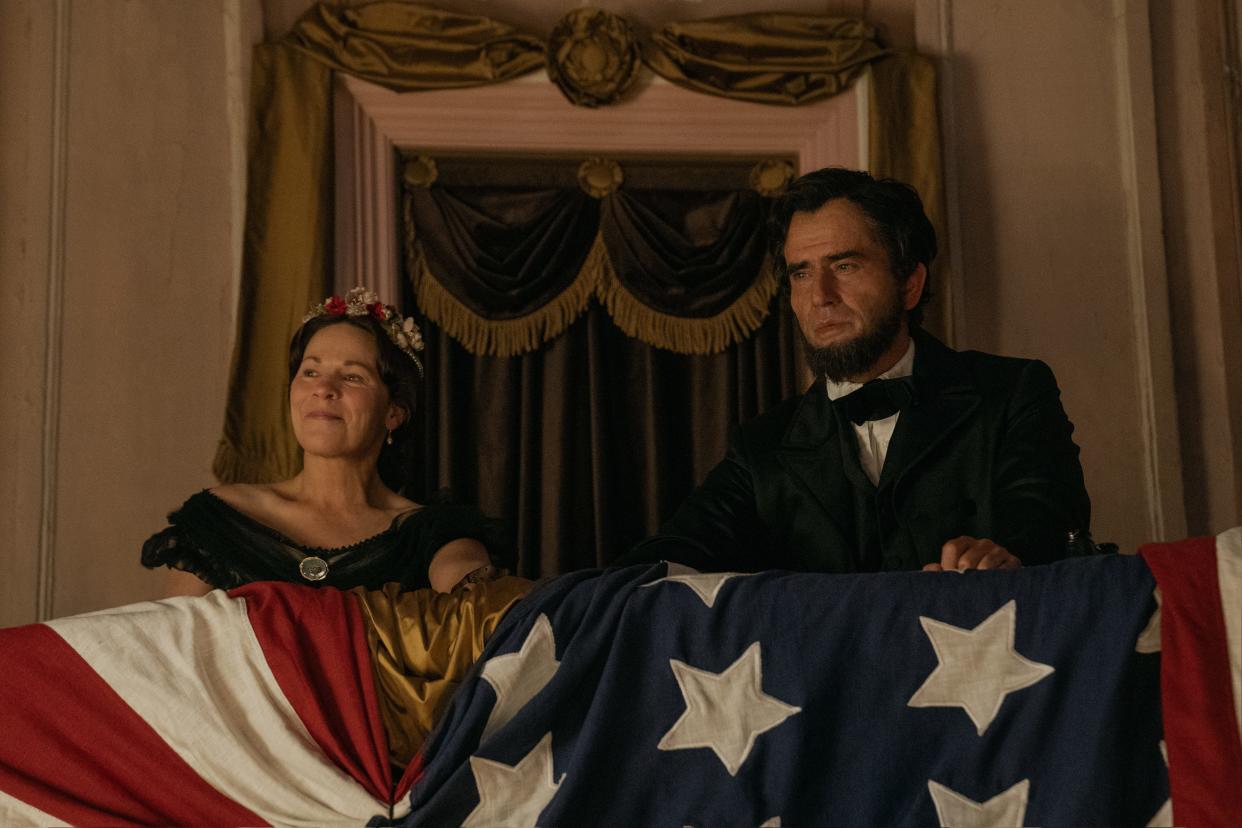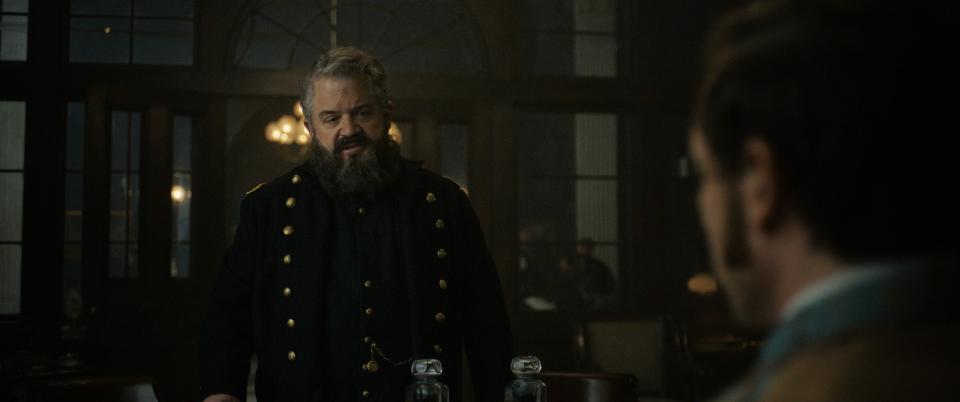How Apple TV+'s "Manhunt" brings cinematic quality to search for Lincoln's killer

- Oops!Something went wrong.Please try again later.
- Oops!Something went wrong.Please try again later.
- Oops!Something went wrong.Please try again later.
- Oops!Something went wrong.Please try again later.
The miniseries “Manhunt,” based on the fantastic book by James L. Swanson, premieres on Apple TV+ this Friday. The first two episodes were made available to the press, and I can report they are expertly shot and bring a thrilling sense of danger and intrigue to a tragic moment in our country’s history.
As directed by veteran filmmaker Carl Franklin, “Manhunt” stands as an excellent example of how streaming has enticed our better directors, giving them a showcase as well as a budget to let them shine.
In April 1865 — barely into his second term — President Abraham Lincoln (Hamish Linklater) is getting good news after four years of administering a bloody civil war. The 13th Amendment is passed and Lee has surrendered. It appears the country is heading towards Reconstruction. But a plot is underfoot, a plot largely forgotten by pop history.
One conspirator breaks into Secretary of State William Seward’s home and stabs him within an inch of his life. Another waits for Vice President Andrew Johnson, but loses his nerve. Then there’s John Wilkes Booth (Anthony Boyle) and the Ford Theatre. Despite 1500 people in the audience witnessing him assassinate the president, Booth is able to get away.
“Manhunt” is framed as an investigative thriller led by Secretary of War Edwin Stanton. He is played with dogged earnestness by Tobias Menzies, so memorable in last year’s “You Hurt My Feelings.” Stanton knows this is not simply the loss of a great president, but potentially the loss of the promise of the Civil War’s victory.
The stakes are high and, in real time, the administration can only speculate the scope of the crime. Were these merely Confederate sympathizers — or was this the Confederacy itself trying to stage nothing short of a coup?
Stanton is persistent in his obsession, as any good investigator in these stories is. He surveys the theater and talks to witnesses. One imagines the Secretary of War has other things to worry about, but a direct attack on the succession of the presidency probably would top the list. Stanton does delegate the manhunt for Booth to Lafayette Baker, played by comedian Patton Oswalt with a bombastic sense of humor and a wicked gleam in his eye.

Meanwhile, Booth has a broken leg and finds treatment at the hands of Dr. Samuel Mudd (Matt Walsh, another comedian doing well with drama). Mudd tending to these wounds and providing Booth with a place to stay for an extended period of time hints at the coordination of the plot. “Manhunt” also provides flashbacks as to how Booth put together his plan and the motivations of the people who went along with it.
The pursuit of one of the most notorious criminals in our nation’s history is smartly used to highlight the tenuous nature of peace in the aftermath of Appomattox. Troops are only learning of the news. Tensions remain high. Change is occurring at a rapid clip, and resentment boils up in the eyes of some men. Dr. Mudd still treats his slaves as though the Constitution wasn’t amended and remains a menacing force over their autonomy.
Franklin expertly blends this quasi-crime procedural with history. You might not know him or his work. But I would urge you to watch his earlier films “One False Move” and “Devil in a Blue Dress.” Two of the better films from the first half of the '90s, which make you mourn the better career Franklin should have had.
Some flops landed him in director’s jail, and he transitioned to prestige television early on, helming episodes of “The Pacific” and “House of Cards,” among others. But he never lost his sense of the language of cinema.
Consider his ability to keep track of different parts of “Manhunt” using color. The investigation is filmed with dark blues to reflect the mood and mindset of those looking for clues. Whereas Booth’s fleeing out into the wilderness uses more natural, bright light, subliminally making us sense Booth is free but also exposed.
Also, I am unsure how Franklin is able to make night scenes look so clear and concise when most streaming shows can barely make out what’s being seen. Perhaps someone who takes the time to properly light his sets can make all the difference.
Franklin is given what appears to be limitless resources to bring this story to life. The sets vividly highlight Washington D.C. with incredible detail. As a viewer, you can feel the buildings hum and breathe. You can study the background and develop a sense of time and place. It’s quite an achievement.
As someone who cannot get enough of books about our political history, “Manhunt” is a recent favorite. But Franklin makes it his own work by taking a compelling story and bringing it to life in surprising ways. “Manhunt” has the makings to be one of the best streaming miniseries you are likely to see.
James Owen is the Tribune’s film columnist. In real life, he is a lawyer and executive director of energy policy group Renew Missouri. A graduate of Drury University and the University of Kansas, he created Filmsnobs.com, where he co-hosts a podcast. He enjoyed an extended stint as an on-air film critic for KY3, the NBC affiliate in Springfield, and now regularly guests on Columbia radio station KFRU.
This article originally appeared on Columbia Daily Tribune: How streaming "Manhunt" searches for Lincoln's killer with cinematic flair

